Introduction
When comparing camera lenses, one of the most commonly discussed features is how “fast” a lens is—usually expressed in terms of f-numbers. But what do those numbers actually mean, and how precise are the differences we talk about, like “half a stop” or “two-thirds of a stop”?
In this article, we’ll unpack how f-numbers relate to light transmission, explore why the system isn’t always as exact as it seems, and show you how to calculate these differences for yourself—or simply reference our handy table at the end.
Contents
Background
When we include alternative lens options in a review, we often highlight how much faster or slower they are compared to the lens being tested. For example, we might note that Lens A is half a stop faster, or that Lens B is one and a half stops slower.
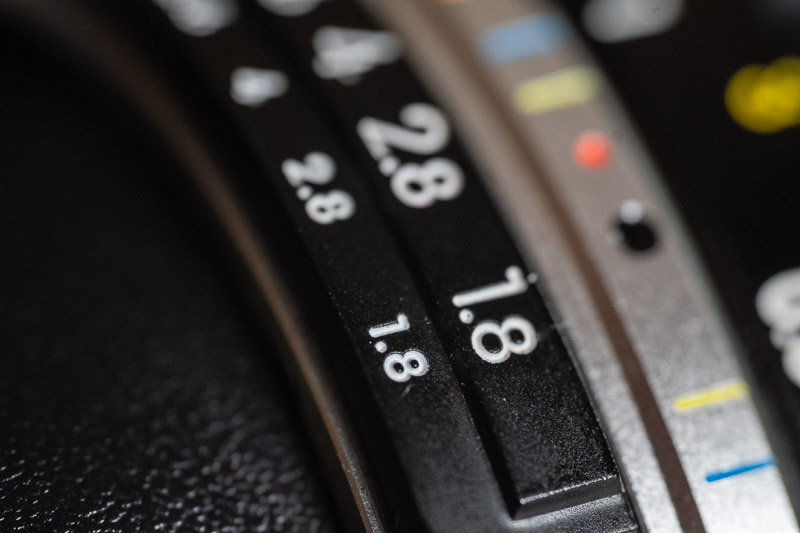
However, these figures are often only approximations. This is because lens and camera manufacturers have adopted different conventions over time, and the way aperture values are displayed doesn’t always reflect the true mathematical differences in light transmission.
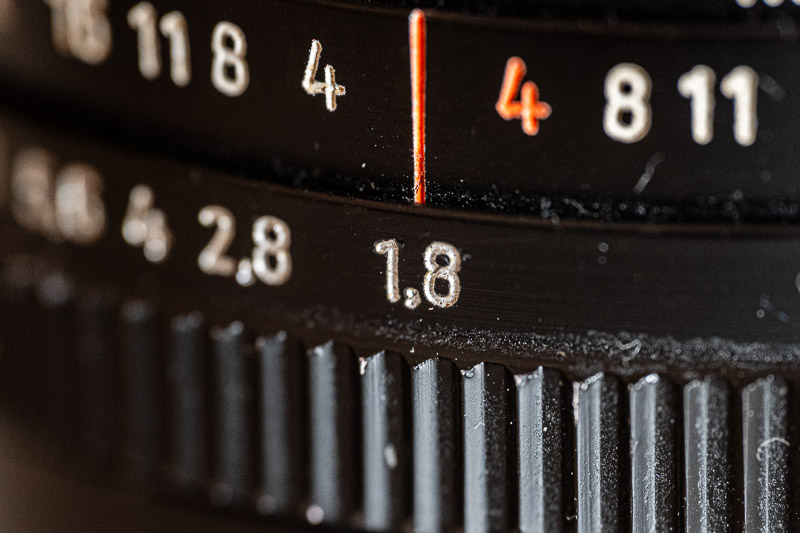
Most modern digital cameras show f-stops in one-third stop increments. Some older or mechanically simpler lenses use half-stop clicks on the aperture ring and some other only full stops. Both systems are convenient but not always precise.
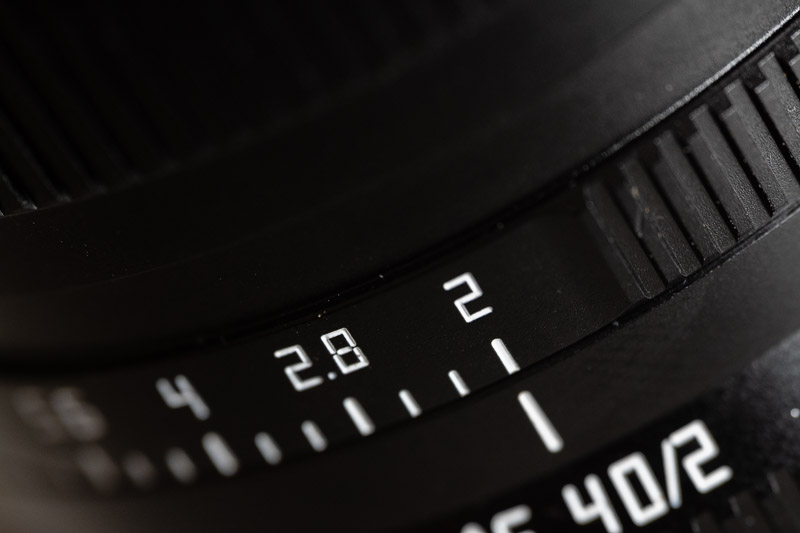
Let’s look at an example. Say you have a lens with half-stop increments and a maximum aperture of f/1.7. The next step on the ring might be f/2, implying that f/1.7 to f/2 is treated as half a stop. But what if the same lens used one-third stop steps instead—would f/1.8 appear between f/1.7 and f/2? And would that mean each step is now a third of a stop, which makes the same f/1.7 to f/2 to be treated as 2/3 stop?
These kinds of inconsistencies show how f-stop labels often reflect practical rounding rather than exact light differences.
In a recent article, I wrote that a lens with an f/1.4 aperture is almost two-thirds of a stop faster than a lens with an f/1.7 aperture. I received a comment saying that this was incorrect and that the difference is actually half a stop. But the truth is, neither is exactly right.
To be precise:
-
Half a stop slower than f/1.4 is f/1.68
-
Two-thirds of a stop slower is f/1.78
So, f/1.7 lies between those two values. It isn’t exactly either of them.
F/1.68 is indeed closer to f/1.7 than f/1.78 is. However, since modern cameras typically show f-stops in one-third stop increments, I chose to describe the difference as almost two-thirds of a stop—to emphasise that it’s an approximation, not a precise value.
Even if we wanted to discuss such small differences, there is another factor: rounding. Most manufacturers round the focal length and f/stop values of their lenses, and sometimes graciously so.
Many f/2.0 lenses are actually closer to f/2.05, and your fancy f/1.0 lens might be f/1.05 in reality — just as most “50 mm” rangefinder lenses are around 51.6 mm.
And there is more: the f/stop usually changes with the focus distance. An f/2.8 macro lens might have the light-gathering capabilities of an f/2.8 lens at infinity, but at its minimum focus distance, it might very well be only an f/5.6 lens. On Nikon’s cameras, this will be correctly registered, but this is not the case for most other manufacturers.
On a German photography online board there is even a sticky post in the Nikon section explaining this, as people constantly complain that their pricey macro lens is slower than advertised because they do not understand the science behind it.
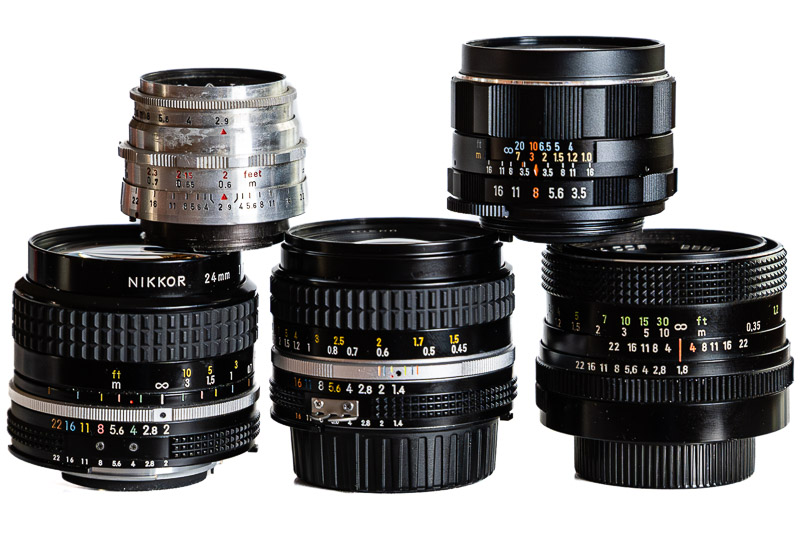
The Science

If you’re interested in the technical side—or want to calculate it yourself—here’s the explanation. Otherwise, feel free to skip ahead to the table below.
The f-number (f# or f-stop) of a lens is a ratio between the lens’s focal length and the diameter (D) of its aperture:
f-number = focal length / aperture diameter
( f# = focal length / D )
From that, we can also say:
D = focal length / f#
In photography, a “faster” lens means it has a larger maximum aperture—that is, a smaller f-number (f#). A larger aperture allows more light in because the opening is physically wider. Since the aperture is circular, we calculate its area (A) using the formula for the area of a circle based on its radius (r):
A = π× r²
The radius (r) is half the diameter (D), so:
A = π(D / 2)²
Or
A = (π × D²) / 4
Now, using the formula for diameter-focal length-aperture (above), we substitute:
A = (π × (focal length / f#)²) / 4
Which simplifies to:
A = (π × focal length²) / (4 × f#²)
This shows that the light entering the lens is inversely proportional to the square of the f-number, so:
-
Doubling the f-number (for example, from f/4 to f/8, which is two full stops) reduces the aperture area by a factor of four, and allows one-quarter as much light in.
-
Halving the f-number (for example, from f/8 to f/4, also two full stops) increases the aperture area by a factor of four, and allows four times as much light in.
This is why each full stop on the f-number scale represents either a doubling or halving of the light. The standard full-stop sequence—f/1.0, f/1.4, f/2.0, f/2.8, f/4, f/5.6, f/8, f/11, f/16, and so on—is based on multiples of the square root of 2 (√2 = 1.414). To avoid confusion, note that this is a geometric sequence and not an arithmetic one.
Because (√ 2)² = 2, each full stop means a change in light by a factor of 2, either more or less, depending on the direction.
1 × (√ 2) ≅ 1.4
1.4 × (√ 2) ≅ 2
2 × (√ 2) ≅ 2.8
..
16 × (√ 2) ≅ 22
22 × (√ 2) ≅ 32
So, now you can calculate the exact difference between f-numbers and how much faster or slower one aperture is compared to another—or you can simply refer to the table below.
Table of F-Stops and Their Exact Values
Here’s a table showing different f-stops, along with the exact values that are 1/2, 1/3, or 1/4 stops faster or slower than each one.
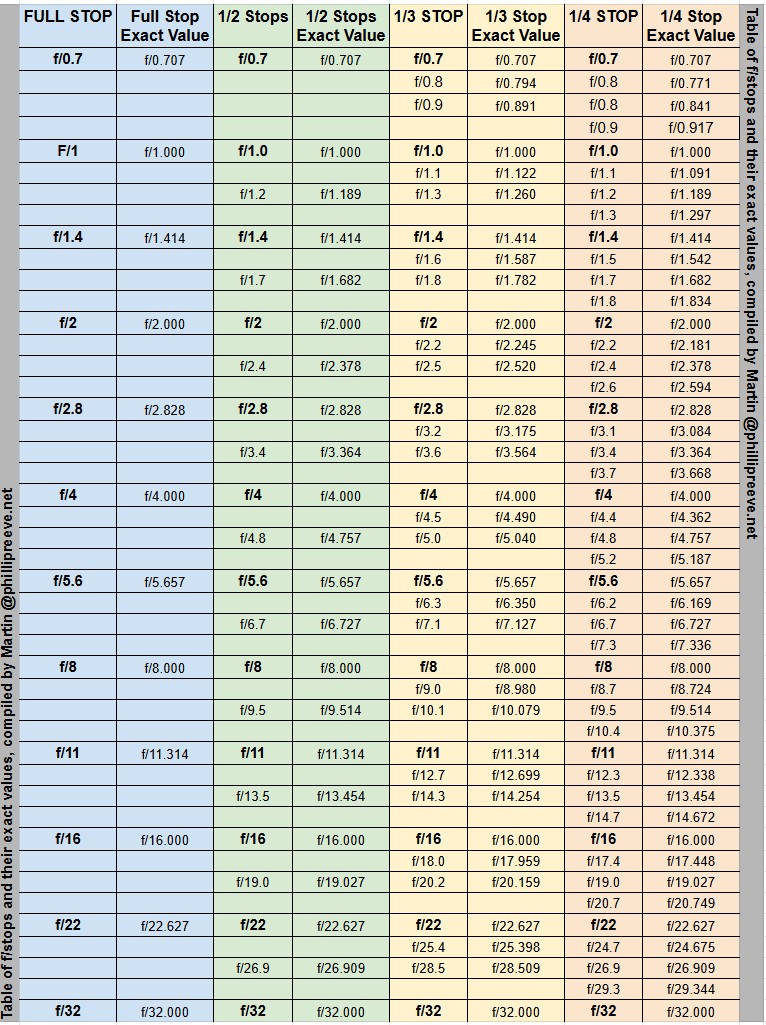
Some readers may wonder about the speed of a lens with a max aperture of f/0.95 (e.g. Nikon Z 58mm f/0.95 S Noct or Leica Noctilux-M f/0.95 ASPH), how much faster than f/1.2 are they?
Well, f/0.95 is only about 1/7 stop faster than f/1.0 and approximately 0.67 stops faster than a f/1.2 lens, i.e., about 2/3 stop.
Fun facts
The Fastest Lens Ever Made
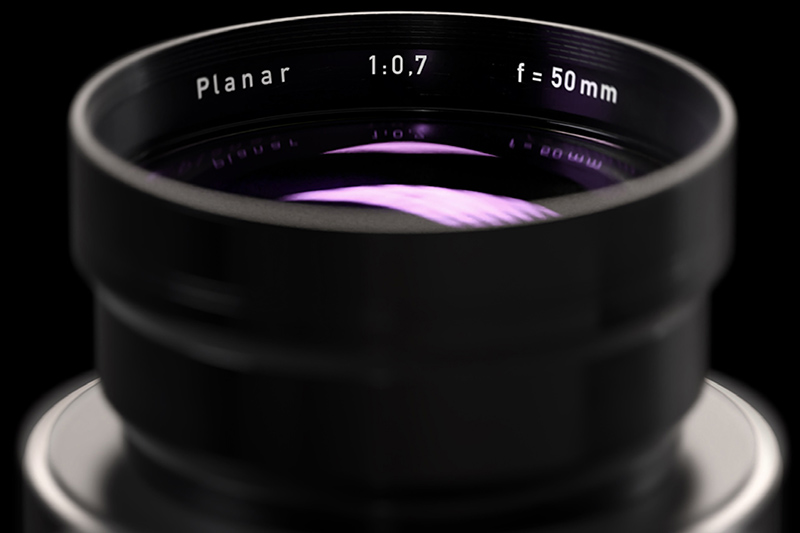
The fastest lens ever made is the Carl Zeiss Planar 50mm f/0.7. Developed in 1966 for a very specific purpose, this lens was acquired by NASA for its Apollo lunar missions. A persistent rumor suggests the lens was designed to photograph the far side of the Moon in extremely low light, but this has never been confirmed and is widely considered a myth. Only ten units of the f/0.7 lens were ever produced, and it was never made commercially available; it was strictly a special-order item.
One of the most famous stories surrounding the Zeiss Planar 50mm f/0.7 lens is its use by film director Stanley Kubrick for his 1975 film Barry Lyndon. Kubrick reportedly acquired three of these lenses to shoot scenes lit primarily by candlelight – a groundbreaking cinematic technique at the time due to the lens’s exceptionally wide f/0.7 aperture, which allowed him to capture images in very low light. This work won the film four Academy Awards, including Best Cinematography. Today it might not sound that impressive, but back then it was done on film cameras with complex moving shots—not just simple still images—which was a remarkable feat for the time.

However, the rumor that Kubrick acquired the lenses from NASA is also a myth; Zeiss sold the lenses directly to Kubrick’s production company. According to Zeiss, ten lenses were produced: six were sold to NASA, three to Stanley Kubrick, and one was retained by Zeiss.
The Fastest Commercially Available Lens
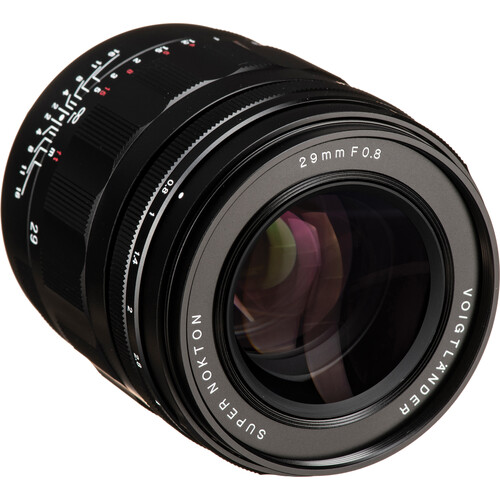
You may ask about the fastest commercially available lens: The Voigtländer 29mm f/0.8 Super Nokton aspherical, exclusively for the Micro-Four-Thirds standard, and is the world’s first production lens with a speed of F0.8 at its introduction, November 2020.
For a larger format you can get the second fastest lens, available for APS-C cameras, the Kipon Ibelux 40mm f/0.85 Mk III. Now in its third iteration, it’s priced around $1,800 and is available for Fuji X, Nikon Z, Canon RF, Sony E, L-Mount, Canon EF-M, and Micro Four Thirds mounts.
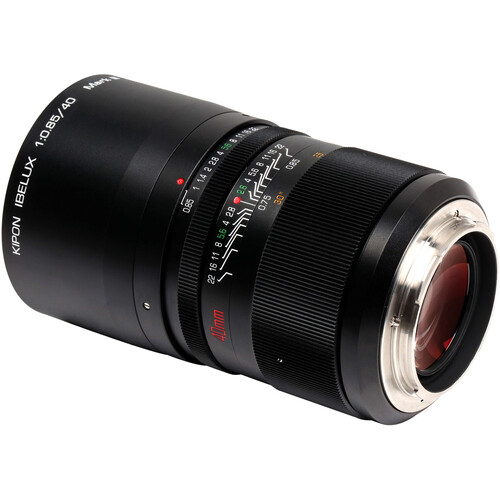
Further Reading
What camera gear and accessories do I use most frequently?
Support Us
Did you learn something new, find this article useful, or simply enjoy reading it? We’ve put a lot of time and resources into creating it, and your support helps us keep going. If you’d like to show your appreciation, please consider clicking the Donate button!
![]()

(Donations via Paypal or bank card)
What’s in my camera bag? MY 2024 KIT!!
- Main camera : https://amzn.to/3TsGtKg
- Camera grip : https://amzn.to/4e0G3CR
- Memory Card 1: https://amzn.to/47pA20i
- Memory Card 2 : https://amzn.to/3XHYxlZ
- Camera 2 : https://amzn.to/3Xifou8
- Camera grip: https://amzn.to/4dYYpV9
- Memory card 1: https://amzn.to/4e5h2H0
- Memory card 2: https://amzn.to/3zu7W7n
- Small travel tripod: https://amzn.to/4goIX68
- Mini tripod: https://amzn.to/4e09XXX
- Small shoulder bag: https://amzn.to/47tPMiY
- Medium shoulder bag: https://amzn.to/4ej4bjY
This site contains affiliate links, for which I may receive a small commission if you purchase via the links at no additional cost to you. This helps support the creation of future content.
Martin
Latest posts by Martin (see all)
- Analogue Photography: Part 4 – Ilford HP5 Plus at a Historical Engine Factory - December 3, 2025
- REVIEW: 7Artisans AF 10mm f/2.8 (APS-C) - November 30, 2025
- REVIEW: 7Artisans AF 35mm f/1.8 - October 15, 2025

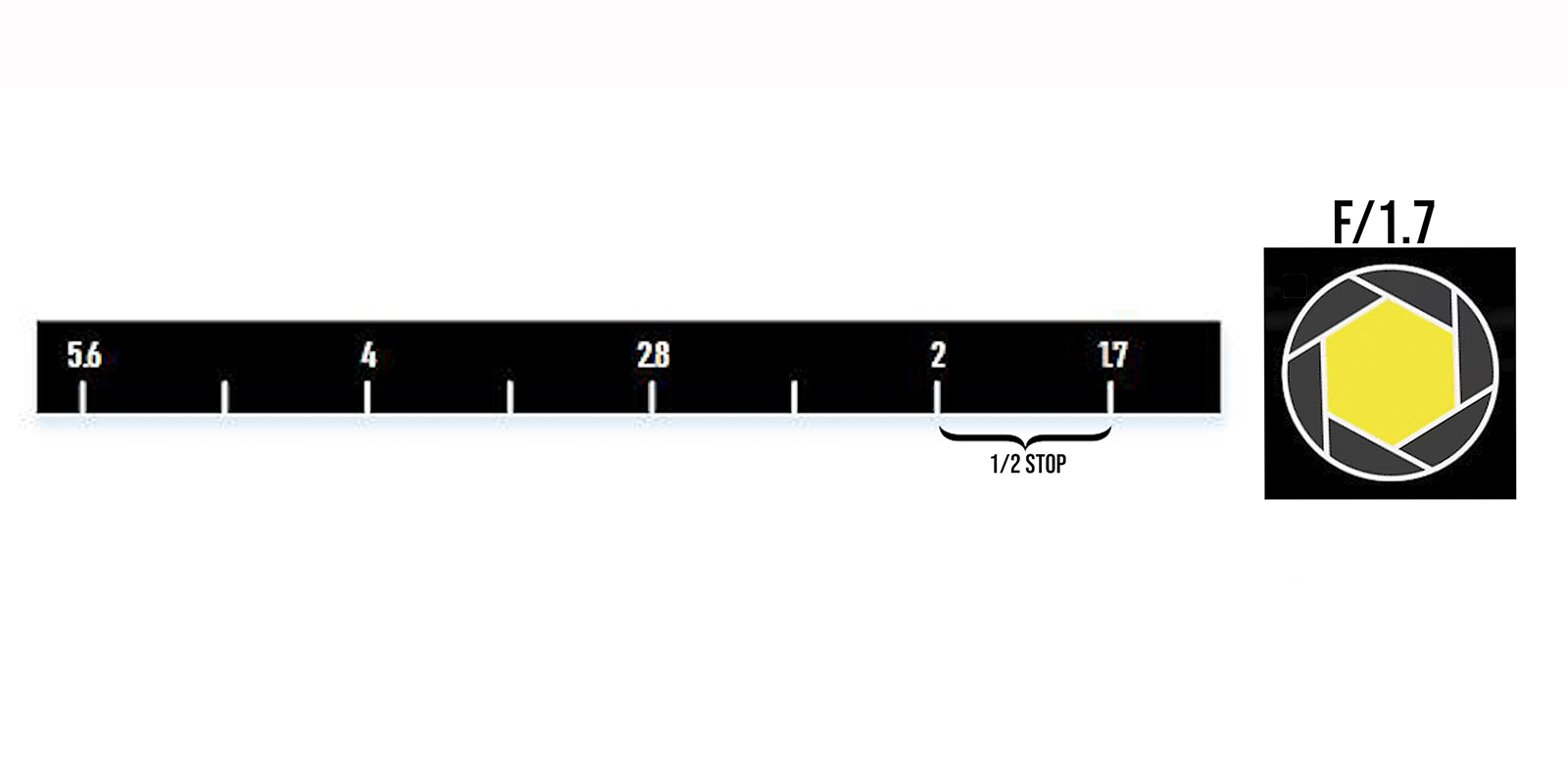

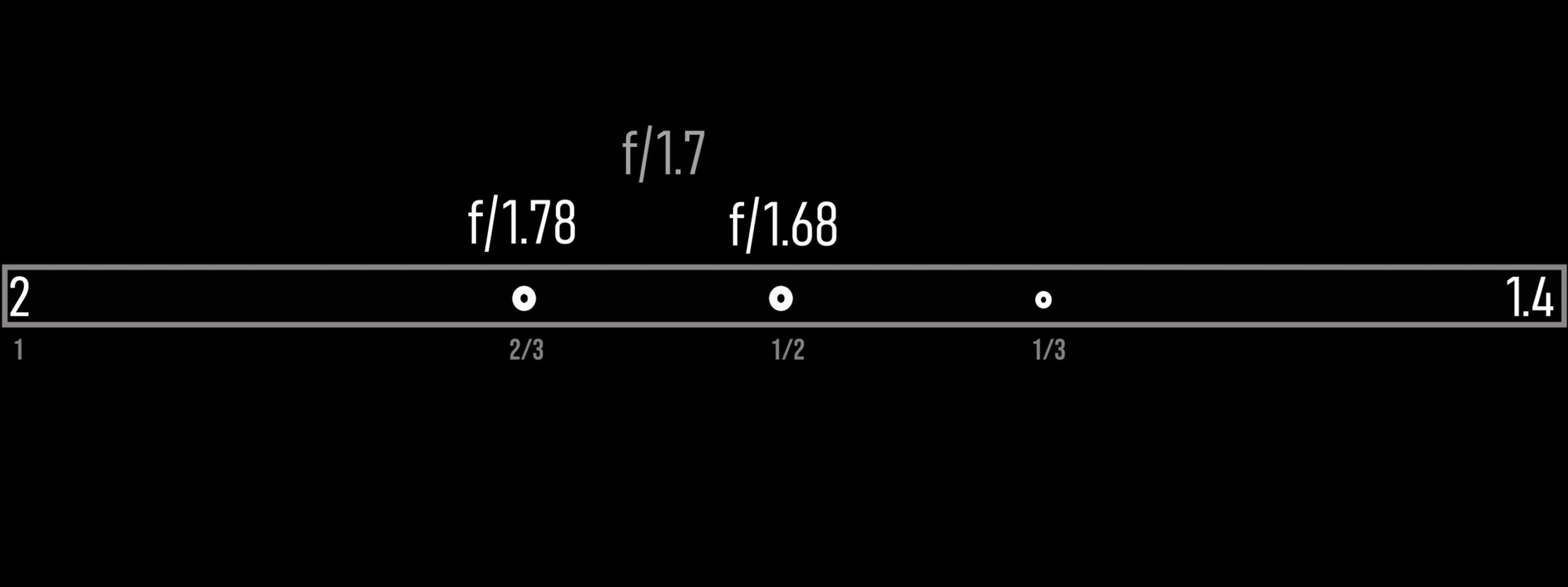

F-stop and “speed” are not synonymes. Therefore “The fastest lens ever made is the Carl Zeiss Planar 50mm f/0.7” is arguably not quite correct even if we talk only about movie/still lenses. The Planar is roughly roughly a (Canon) APS-C lens (27mm image circle diameter). Thus on FF any f/1.1 or faster FF lens is “faster” than this Planar.
—
And then something entirely different: I think it would be good to add to the article something about tolerances from ISO-517:2008 – for example wide open the maximum deviation from the f-number is 5%.
Well, speed has nothing to do with sensor (medium) size. F1.4 is F1.4 on any sensor. It’s just a cropped image. You talk about depth of field difference, but that appears only due to different physical distance-to-the-subject needed for the same composition. A cropped FF image will look exactly the same as the image captured with an APS-C camera. Light transmission is also the same. Any exposure difference may depend on the camera’s metering. Also FF cameras will account for more vignetting they see – which may affect how they meter for the whole scene.
Any lens is equally “fast” on any camera. Limited field of view is another thing. Even so, a lens always projects the same image circle, and what the sensor (film) “sees” is another thing.
No. I think you have missed the fundamental in the science part of the article:
f-number = focal length / Aperture Diameter
Where in this formula is anything about sensor size or image circle?
Furthermore, that Planar was designed for 35mm film format, the same size as an FF camera, how did you figure that any f/1.1 lens on FF would be faster than that Planar?
They are not necessarily imaging lenses, but there are so-called “transmission spheres” for interferometers that still work in the same way, and have an f-number of f/0.56, very close to the theoretical limit of f/0.5.
It would be very interesting to get one of those and check what image circle it has… and if it can be adapted for imaging purposes!
Here, we talk about photographic lenses, nothing else.
Great primer article! Thank you!
Just one thing for the PROPER nerds, like myself:)
The Zeiss is certainly the most legendary fast lens, but by no means THE fastest.
There are in fact quite a few faster ones, across the film/sensor format. THE fastest of them are f/0.5, such as the 20mm f/0.5 GOI CV-Siercalno-Linsovyi (“Federal Optical Laboratory of Leningrad”) from 1948, a 3/6 catadioptric design with 2.9mm image diameter and an angle of view 8.24° (equivalent to a 300mm on FF). It is rare, but it WAS made, weighing 9.7kg. It’s further documented here: marcocavina.com/articoli_fotografici/GOI_20mm_f_0,5/00_pag.htm
But even among ‘glass’ lenses, there are f/0.66s and others.
The Zeiss is not even the fastest FF lens, since it does not cover FF – APS at best. Btw., it’s just a Nazi-era Zeiss 70mm f/1 night vision lens with an added focal reducer. They later experimented with a front-mounted meniscus to turn it into a 50mm f/0.63 but deemed it too soft.
Here is an interesting list of fastest lenses across formats, focal lengths and eras – containing a full three f/0.7 lenses that will cover FF: https://docs.google.com/spreadsheets/d/1WKzZoHmyEaVV18iuB7oP-CcAxf_QLwAYhyL-vjYFIBE/edit?usp=drive_web&ouid=108628632450090560676
Cheers!
Does any of these lenses have actually been used on a camera for photography or film making?
Correction on the fastest commercially available lens. That honor in the overall category for a modern lens you can actually buy today, goes to Voigtlander 29mm f/0,8. It only covers M4/3 sensor size not the aps-c like the Kipon, bur overall is a little bit faster. It is also priced down at B&H currently from the original 1800 to 1150USD.
Yes, I missed that. I’ll add it to the article, thanks.
Guess not many people are keen on paying 1800 to have a full frame equivalent of an 58mm 1.6 lens 😅
A true comparison would be possible if lens manufacturers specified the aperture as a T-stop (transmission stop), as is common practice with cine lenses.
The aspect I sought for in this article. Old PP and MP magazine tests also mentioned the actual transmission value, the related T stop, the measured focal length next to the info that was written on the beauty ring of the tested lens. This might hardly be interesting for a 2.8 lens but could shed another light when 1.2 and 1.4 lenses are compared if the lens should perform in low light conditions. Some time ago Bastian added similar measured data in an overview of several lenses. It is quite a job, I understand that.
This article isn’t a lens comparison and doesn’t test actual light transmission (T-stops). It’s simply an explanation of how f-stops are calculated and a reminder that what’s printed on the aperture ring shouldn’t always be taken at face value. If that’s not the kind of information you’re looking for, no worries—just skip it. I know some readers are already familiar with these details and not every post will be interesting to everyone, and that’s fine – others might still find it useful.
Sorry Martin, it is not that I expected a summary of lens deviation numbers but while you mention the deviations by rounding off numbers you did not mention what manufacturers see as tolerable in their specs. You mentioned the focal length deviation, that alone shifts the interpretation of aperture numbers as well. A Rollei standard lens measured had 5%+ on its focal length. Actual apertures (mainly max) can already be shifted and T numbers even more. The link to Bastian’s article:
https://phillipreeve.net/blog/comparison-super-fast-50mm-m-mount-lenses/
Again, the aim of this article was not to go into the details of comparing or why the focal length or f-stops are not accurate, rather, how they are calculated and that they are not as accurate as the manufacturers mark them, and actually mostly to give the readers a more accurate table of f-stops so that they can easily see and compare them by themselves. Bastian’s article is of a completely different nature, taking a couple of lenses and compare them to each other.
Thank you Martin!
I love this kind of articles!
But get tired of the comments!
Thanks Chaliel.